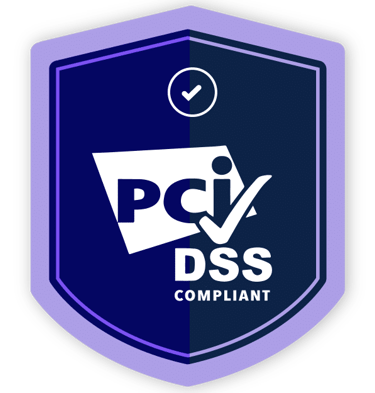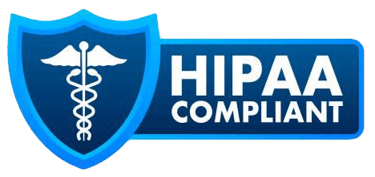The Future of QAPI: Integrating AI and Predictive Analytics in Compliance Programs
Discover how the future of QAPI in home health is being transformed by artificial intelligence and predictive analytics to strengthen Medicare Conditions of Participation (CoPs) compliance, reduce risk, and drive better patient outcomes.
11/21/20257 min read
In today’s regulatory environment, home health agencies can’t afford to treat Quality Assessment and Performance Improvement (QAPI) as a paper exercise. Surveyors expect a data-driven, ongoing, and agency-wide QAPI program that directly supports patient outcomes and compliance with the Medicare Conditions of Participation (CoPs) for home health. At the same time, agencies are drowning in documentation, OASIS data, EMR alerts, and payer rules.
That’s exactly where artificial intelligence (AI) and predictive analytics are reshaping the future of QAPI.
Rather than looking backwards at what went wrong last quarter, agencies can now use technology to predict risk, prevent problems, and prioritize interventions—while also tightening alignment with CoPs and reducing the risk of survey deficiencies, denials, and payment clawbacks.
Below is a deep dive into how AI and predictive tools are changing QAPI in home health, what this means for compliance, and how agencies can begin integrating these solutions into their existing programs—without losing sight of clinical judgment or patient-centered care.
1. QAPI in Home Health: From “Check-the-Box” to Real-Time Intelligence
Under the Home Health CoPs, agencies are required to develop, implement, evaluate, and maintain an effective, ongoing, agency-wide, data-driven QAPI program. That includes:
Systematic data collection and monitoring
Performance improvement projects (PIPs)
Leadership oversight and Governing Body involvement
Focus on patient safety and quality of care
Documentation that shows actions taken and measurable results
The challenge is not the lack of data; it’s the overload of data:
OASIS assessments
EMR clinical notes and care plans
Hospitalization and ED visit trends
Medication reconciliation issues
Missed visits, late documentation, LUPA risk
Patient satisfaction and grievance logs
Traditional QAPI often ends up being retrospective—by the time the team analyzes data, the patient has already been hospitalized, a survey citation has been issued, or a denial has occurred. AI and predictive analytics shift this dynamic from “What happened?” to “What’s about to happen, and how do we prevent it?”
2. What Do We Mean by AI and Predictive Analytics in QAPI?
In the QAPI context, AI and predictive analytics are not about robots replacing nurses; they are about tools that help clinicians see patterns and risks earlier.
Some key concepts:
Predictive analytics: Uses historical and current data to estimate the probability of future events—e.g., which patients are at high risk for hospitalization or falls.
Machine learning (ML): Algorithms that “learn” patterns from data (OASIS, vitals, diagnoses, visit trends, etc.) and improve over time.
Natural language processing (NLP): AI that can “read” free-text clinical notes, identify key risk factors (e.g., confusion, non-compliance, caregiver burnout), and flag them for review.
Anomaly detection: Identifies unusual patterns—such as a sudden spike in missed visits or a pattern of incomplete assessments by a specific discipline or staff member.
When integrated properly, these tools can feed directly into your QAPI dashboard, highlighting where to focus your time, education, and interventions.
3. How AI and Predictive Tools Support Medicare CoPs Compliance
AI doesn’t replace the Conditions of Participation; it helps you live them out more consistently and document that compliance more clearly. Here are some examples aligned with core CoP expectations:
a. Patient Assessment and Plan of Care
CoPs require that each patient must receive a comprehensive assessment and an individualized plan of care that is continually updated. AI can:
Scan OASIS and clinical notes to detect inconsistencies or missing elements that might trigger surveyor questions.
Predict which patients are at high risk of hospitalization, falls, or wound deterioration, prompting earlier nurse or therapist interventions.
Alert QAPI teams to patterns—for example, “Patients with CHF admitted from XYZ hospital have a 30% higher hospitalization rate within 30 days.”
This allows agencies to design targeted PIPs around high-risk populations, directly supporting CoP requirements for data-driven performance improvement.
b. Coordination of Care and Communication
The CoPs emphasize interdisciplinary communication and coordination. Predictive tools can:
Flag patients with multiple disciplines where documentation suggests gaps in communication (e.g., conflicting information about functional status or goals).
Identify missed or late visits that may affect clinical stability and patient outcomes.
Highlight patterns of incomplete or late documentation that may impact both quality and billing integrity.
This helps QAPI teams focus on real breakdowns in coordination, rather than generic “communication could be better” statements.
c. Adverse Events, Hospitalizations, and ED Visits
Surveyors expect agencies to track, investigate, and act on adverse events and unplanned care. With predictive analytics, agencies can:
Generate risk scores for each patient and monitor them in real time.
Identify common root causes of hospitalization across populations—e.g., fluid non-compliance in CHF patients, unmanaged pain, medication errors, or lack of caregiver support.
Evaluate whether interventions implemented through PIPs (like teaching tools, telehealth check-ins, or coaching phone calls) actually lower risk scores and hospitalization rates.
This moves QAPI from passive reporting to proactive risk management aligned with CoP expectations.
4. Practical Use Cases: Where AI Fits into Day-to-Day QAPI
Here are specific, practical ways AI and predictive analytics can operate inside a functioning home health QAPI program:
1) High-Risk Patient Dashboard
A real-time dashboard that ranks active patients by risk of:
Hospitalization or ED visit
Fall
Medication-related adverse event
Wound deterioration
The QAPI committee and clinical leadership can use this to:
Audit charts of the highest-risk patients each week
Confirm that care plans reflect all risk factors
Trigger additional visits, telehealth check-ins, or case conferences
2) Documentation Quality and CoP Readiness
Using AI-driven chart review, agencies can:
Automatically scan charts for missing orders, unsigned plans of care, incomplete assessments, or late documentation that may impact CoP compliance or payment.
Identify which clinicians may need targeted education (e.g., documentation of homebound status, medical necessity, or skilled need).
Generate QAPI reports that demonstrate improvements in documentation metrics over time (e.g., “timely completion of SOC narratives improved from 70% to 93% after targeted training”).
3) Targeted Performance Improvement Projects (PIPs)
Rather than choosing PIPs based only on anecdotal reports, AI can help agencies select and refine PIPs by:
Quantifying issues (e.g., “40% of wound care patients experience delayed healing beyond 12 weeks”).
Segmenting data by diagnosis, referral source, clinician, or branch.
Tracking the before-and-after impact of each PIP with precision (e.g., reduction in hospitalization rate for COPD patients after implementing a standardized teaching protocol).
4) Workforce and Operational Analytics
AI tools can also support the operational side of QAPI:
Identifying patterns in missed visits, canceled visits, or staffing shortages that affect quality.
Highlighting scheduling practices associated with better outcomes or lower hospitalization rates.
Detecting patterns of LUPAs, PEPPER risk areas, or documentation that might trigger medical review or denials.
All of this feeds into QAPI discussions about staffing, scheduling, education, and process redesign.
5. Guardrails: AI Must Support, Not Replace, Clinical Judgment
As powerful as these tools are, they must be implemented with clear guardrails:
Clinical Oversight
Every AI-generated alert, risk score, or recommendation should be reviewed by qualified clinical staff. QAPI decisions must remain grounded in clinical judgment, patient preferences, and professional standards.Transparency for Surveyors
If your agency uses AI, surveyors may ask:How is the tool configured?
What data does it use?
How do you act on its alerts?
How does it support—not replace—your QAPI program?
Your policies, QAPI minutes, and data reports should clearly show how the AI feeds into your monitoring and PIPs, not that it operates as a black box.
Data Quality and Integrity
AI is only as good as the data going in. Incomplete, inconsistent, or copy-pasted documentation can lead to inaccurate predictions. Part of your QAPI focus should include data integrity, documentation education, and EMR optimization.Ethics and Equity
Agencies must be vigilant about potential bias in tools—especially if trained on narrow datasets. Your QAPI committee should periodically review whether outcomes and alerts are equitable across patient demographics, referral sources, and payers.
6. Roadmap: How to Start Integrating AI into Your QAPI Program
You don’t have to become a tech company to bring AI into your QAPI. Start with a structured, phased approach:
Phase 1: Assess Where You Are
Map your current QAPI data sources (OASIS reports, hospitalization logs, satisfaction surveys, complaints, missed visits, etc.).
Identify pain points:
Are you always reacting after the fact?
Do you struggle to prioritize PIPs?
Is your documentation quality inconsistent across clinicians or branches?
Phase 2: Clarify QAPI Priorities
Choose 1–2 high-impact focus areas such as:
Reducing avoidable hospitalizations
Improving documentation of homebound status and medical necessity
Standardizing wound care outcomes
Reducing missed visits or late documentation
These priorities will guide what kind of AI or analytics tools you need.
Phase 3: Select the Right Tools
Work with your EMR vendor, analytics providers, or a consulting partner to:
Identify tools that integrate with your existing EMR
Ensure that outputs (dashboards, reports, alerts) are usable for your QAPI team
Confirm that tools support exportable reports and clear documentation for survey readiness
Phase 4: Build QAPI Workflows Around the Data
AI only adds value if it is embedded into real workflows, for example:
Weekly QAPI review of high-risk patient lists and associated charts
Monthly documentation quality reports by clinician or discipline
Quarterly analysis of PIP outcomes with visual dashboards
Standing QAPI agenda items that link AI findings to specific actions and education plans
Phase 5: Train, Re-Evaluate, and Refine
Provide staff education about how and why AI is being used.
Emphasize that tools are there to support clinicians, not judge them.
Regularly ask:
Are we acting on the signals we’re getting?
Are our QAPI outcomes improving as a result?
Do we need to adjust which indicators we monitor?
7. What Surveyors Will See When AI is Integrated Well
When AI and predictive analytics are thoughtfully incorporated, surveyors should see a QAPI program that is:
Clearly data-driven, with meaningful measures tied to patient outcomes and CoPs
Focused on preventive action, not just post-event analysis
Able to demonstrate measurable improvements with supporting evidence
Involving the Governing Body, leadership, and front-line clinicians in ongoing performance improvement
Supported by policies, reports, and QAPI minutes that show a logical link between problems identified, interventions implemented, and outcomes tracked
In other words, AI becomes part of your story of compliance and quality, not a separate technology silo.
8. Bringing It All Together
The future of QAPI in home health is not just about more meetings, more binders, or more spreadsheets. It’s about:
Using AI and predictive analytics to surface risk earlier
Aligning insights with Medicare CoPs and conditions of payment
Focusing QAPI time and energy on the patients, processes, and patterns that matter most
Documenting a continuous, data-driven improvement cycle that surveyors can easily follow
Agencies that embrace this shift will be better positioned to:
Protect their Medicare revenue
Reduce survey deficiencies and corrective action burden
Improve patient safety and outcomes
Support clinicians with actionable, not overwhelming, information
How HealthBridge Can Help
Implementing AI- and analytics-enhanced QAPI doesn’t have to be overwhelming. HealthBridge works with home health agencies to:
Design and optimize QAPI programs aligned with the Home Health CoPs
Integrate data and technology (including analytics tools) into practical, survey-ready workflows
Develop policies, dashboards, and documentation that demonstrate compliance and real performance improvement
Provide ongoing consulting and management support as regulations, technology, and payer expectations continue to evolve
If your agency is ready to move from reactive QAPI to predictive, intelligent, and compliance-strong QAPI, HealthBridge can guide you step-by-step—from strategy to implementation to ongoing support.

Some or all of the services described herein may not be permissible for HealthBridge US clients and their affiliates or related entities.
The information provided is general in nature and is not intended to address the specific circumstances of any individual or entity. While we strive to offer accurate and timely information, we cannot guarantee that such information remains accurate after it is received or that it will continue to be accurate over time. Anyone seeking to act on such information should first seek professional advice tailored to their specific situation. HealthBridge US does not offer legal services.
HealthBridge US is not affiliated with any department of public health agencies in any state, nor with the Centers for Medicare & Medicaid Services (CMS). We offer healthcare consulting services exclusively and are an independent consulting firm not affiliated with any regulatory organizations, including but not limited to the Accrediting Organizations, the Centers for Medicare & Medicaid Services (CMS), and state departments. HealthBridge is an anti-fraud company in full compliance with all applicable federal and state regulations for CMS, as well as other relevant business and healthcare laws.
© 2025 HealthBridge US, a California corporation. All rights reserved.
For more information about the structure of HealthBridge, visit www.myhbconsulting.com/governance
Legal
Resources
Based in Los Angeles, California, operating in all 50 states.






